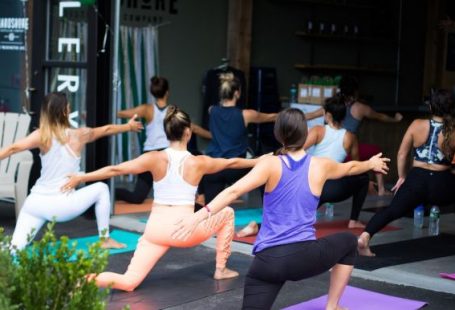Flexibility is a key component of overall fitness and plays a crucial role in preventing injuries. Whether you are an athlete or just looking to improve your overall health, increasing your flexibility can have numerous benefits. In this article, we will explore some effective tips to help you improve your flexibility.
1. Incorporate stretching into your daily routine
One of the simplest and most effective ways to increase your flexibility is to incorporate stretching into your daily routine. Allocate a few minutes each day to perform stretches targeting different muscle groups. Remember to focus on both static stretches, where you hold a position for a set amount of time, and dynamic stretches, where you move through a range of motion. This will help to improve your flexibility over time.
2. Practice yoga or Pilates
Yoga and Pilates are two forms of exercise that are known for their ability to improve flexibility. These practices involve a combination of stretching, strength-building, and balance exercises, which can help to lengthen and strengthen your muscles. Additionally, both yoga and Pilates place a strong emphasis on deep breathing and mindfulness, making them great for reducing stress and improving overall well-being.
3. Use foam rollers or massage balls
Foam rollers and massage balls can be incredibly beneficial for increasing flexibility. These tools work by applying pressure to specific areas of the body, helping to release tension and improve range of motion. By incorporating foam rolling or using massage balls into your routine, you can target tight muscles and knots, effectively improving your flexibility.
4. Stay hydrated
Staying hydrated is a crucial aspect of maintaining flexibility. When your body is well-hydrated, your muscles are able to function optimally, allowing for a greater range of motion. Make sure to drink enough water throughout the day, especially before and after exercise, to keep your muscles supple and flexible.
5. Warm up before exercising
Before engaging in any physical activity, it is essential to warm up properly. A warm-up routine consisting of light cardiovascular exercises, such as jogging or jumping jacks, can help to increase blood flow to your muscles and prepare them for the upcoming workout. This, in turn, will improve your flexibility and reduce the risk of injury.
6. Take regular breaks to stretch
If you have a sedentary job or spend long periods sitting, it is important to take regular breaks to stretch. Prolonged sitting can lead to tight muscles and decreased flexibility. Set a timer or use an app to remind yourself to stand up, stretch, and take a short walk every hour or so. These brief breaks will not only improve your flexibility but also boost your energy levels and overall productivity.
7. Listen to your body
Lastly, it is important to listen to your body and not push yourself too hard. Flexibility takes time to develop, and forcing yourself into positions that are uncomfortable or painful can lead to injury. Be patient with yourself and focus on gradual progress. Pay attention to any sensations of discomfort or pain and adjust your stretches accordingly.
In conclusion, increasing your flexibility is achievable with consistent effort and the right approach. By incorporating stretching into your daily routine, practicing yoga or Pilates, using foam rollers or massage balls, staying hydrated, warming up before exercise, taking regular breaks to stretch, and listening to your body, you can significantly improve your flexibility and enhance your overall fitness. So start implementing these tips today and enjoy the benefits of increased flexibility in your life.





